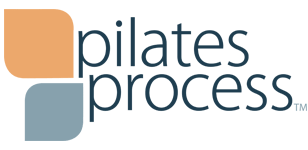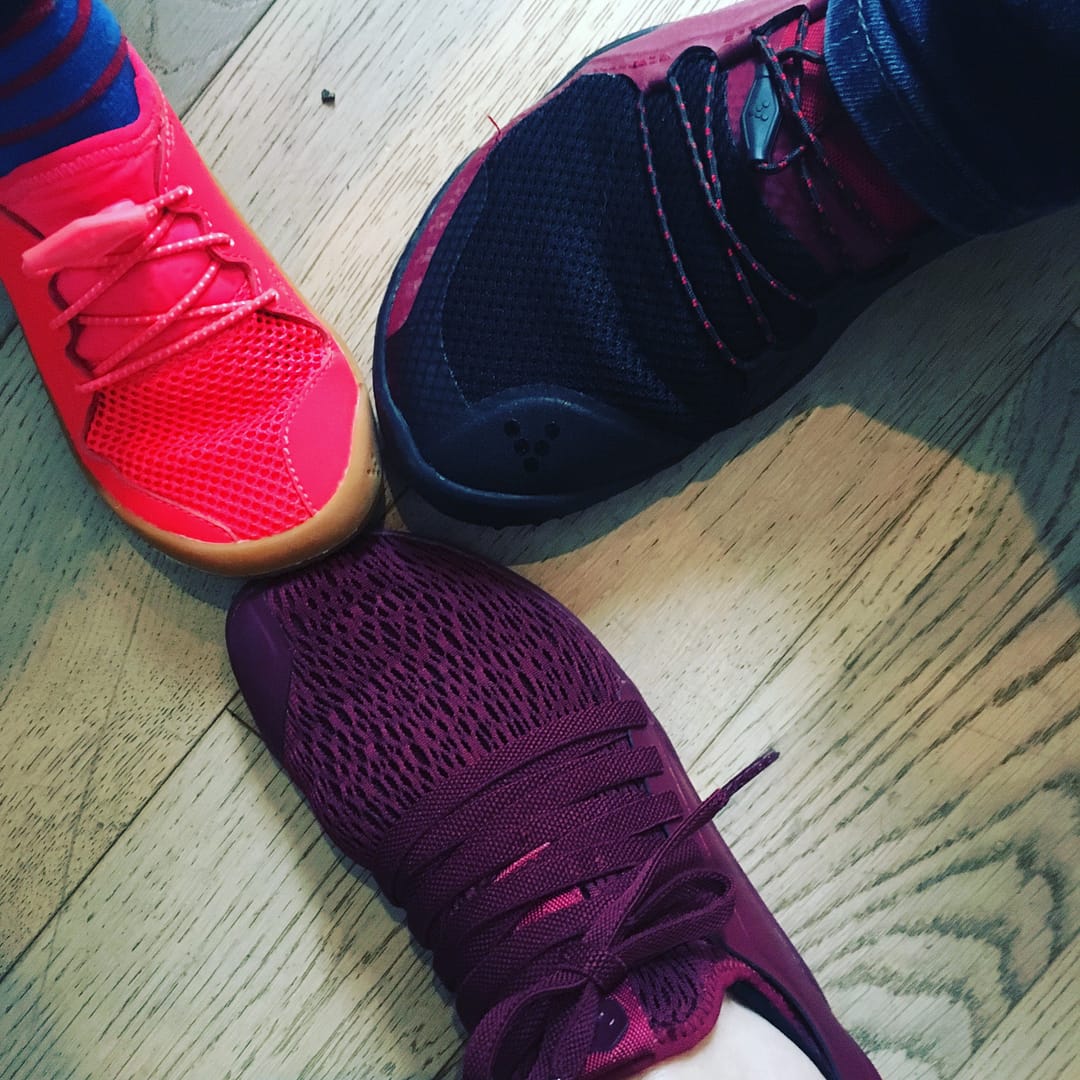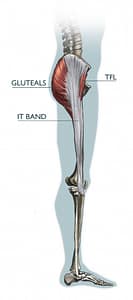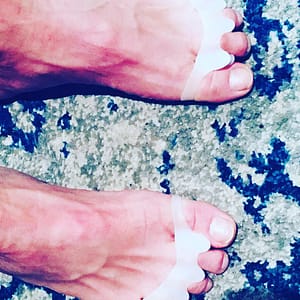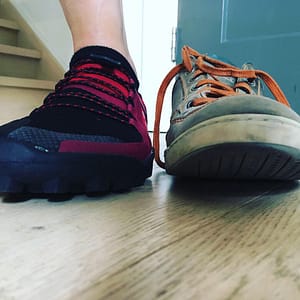A personal success story.
I continue my year long obsession with all things feet, from healthy mechanics and strengthening to looking at our footwear choices and the impact they have on our health.
Here I’ll share with you a specific case study, an example of a successful transition. This is not to say that barefoot shoes are for everyone, or that this is the only path to strong and supple feet. But for those of you who are intrigued by the idea of relying less on supportive shoes and more on supportive feet, it provides an example of what is meant by the common recommendation of “progressive steps to increased tolerance”.
The subject of the case study is Don Gauthier.
Don made a good case study subject for two main reasons.
- He’s typical of a lot of people aiming to make changes in that he is middle aged, sits excessively for work and has niggling common issues related to tightness in the hips and feet.
- He happens to be my husband. And therefore I have full access to prod, question, observe and assess.
A bit of history.
Don gets to the gym at least twice weekly and, not having a car, we walk a lot. Still, it is hard to counter the effects of a 55 hour work week sitting at a desk. ITBand (Ilio-tibial) tightness was a regular complaint as were frequent bouts of plantar fasciitis which would flare up with any attempt to increase running time on the treadmill and particularly with outdoor running. Even a short game of tag with our 6 yr old son would cause mild though persistent heel pain the next day.
Scattered Pilates and Franklin Method interventions offered some improvement, but never the level of success and progression that were hoped for.
The barefoot transition began with the use of toe spacers back in April and continued with the slow introduction of barefoot shoes over 3 months. By taking slow, step by step progressions and by adjusting load in response to pain, Don’s resilience had improved so much by mid summer that there was no longer any sign of tight hips or ITBands, and plantar fasciitis seemed a thing of the past. Running 5k outdoors in barefoot shoes is now a biweekly event and full games of tag are now possible.
Here are the stages of his progression.
1. Toe Spacers
The most immediate and dramatic change came with the use of Toe Spacers. After our Foot Collective workshop this spring, Don started wearing the spacers at home for 30 mins after work. I knew he’d be a good toe spacer candidate having extremely rigid feet that were very supinated (he habitually stands on the outside edges of his feet and always wears down the outer edge of shoes). The toes spacers instantly altered the degree of supination and he felt more lower limb mobility – for instance squats became deeper and easier.
The spacers felt weird, but not uncomfortable.
2. Progress Time and Movement
After 10 days of this, they got much more comfortable and toe spacer time increased to about an hour nightly. We also added in 20 stair calf rises and squats while in the spacers, with the cue of “stop clenching the toes”.
3. Introduced Vivo Barefoot Shoes.
Barefoot shoes (vivos are just one of several brands) are flat – you can feel every crack in the sidewalk, wide so the foot can spread, and without incline to allow full ankle flexion. Don didn’t feel like they were too different from his regular flat-ish running shoes that he wore to work and he comfortably wore the new vivos to work and back (15 mins each way) daily for a week.
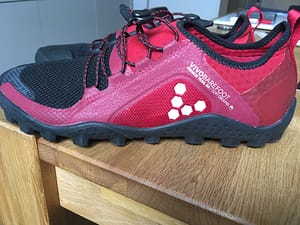
4. Vivos go to the gym.
Incorporating the Vivos into a gym workout on the elliptical followed by 10 mins of treadmill was problem free.
5. Running
Don wore the Vivo shoe for regular workout plus running on the track for 15 mins.
** Note: Step #5 flared plantar fasciitis and he returned to step 4 for another 2 weeks.
6. Run track for 10 minutes in Vivos.
Continued increasing track time by 5 minutes every visit.
At this point there were days where the classic heel pain of plantar fasciitis did flare up the next morning. It resolved within 10 minutes and wasn’t extreme, so we decided it shouldn’t alter the progress.
The Pilates Piece
Three weeks into this entire progression Don started weekly regular Pilates classes which made a huge difference to his hips, shoulders and overall mobility and helped counter the postural challenges of sitting for 10 hours a day. And as it turns out, it’s far more effective to do a full, personal class than it is to randomly be given a couple of exercises whenever we happened to be in the studio.
The whole body approach highlighted the reality that
improving thoracic mobility leads to → improved shoulders and hips which
leads to → improved feet.
Summary
There is no way to gauge how critical each piece of the process was.
Would the toe spacers have been enough on there own?
Maybe just the introduction of wider shoes?
Regular Pilates that addressed imbalances and tightness?
We’ll never know for certain.
But the more I teach the more it’s clear that a complex and broad approach to improved function anywhere in the body is usually the most effective. Few problems are isolated enough to only require local attention.
Remember, this is just one personal story. Not all feet will transition this easily and it’s really easy to flare problems.
If you want to aim for greater foot resilience here are a few tips.
- Progress very slowly.
- Listen to your body’s feedback and adapt accordingly.
- Strengthen feet and ankles while mobilizing. (Click below for my short foot strengthening video).
- Use pain as information. Try to respond to tissue pain related to movement with curiosity not fear. How do I move differently and adjust? vs I shouldn’t move.
Need guidance? Ask us. We are happy to help incorporate a foot series into your home exercise plan.
Laura Helsel Gauthier
Director
Pilates Process
